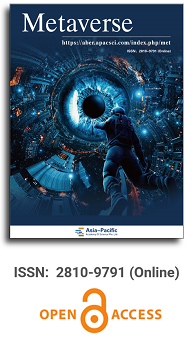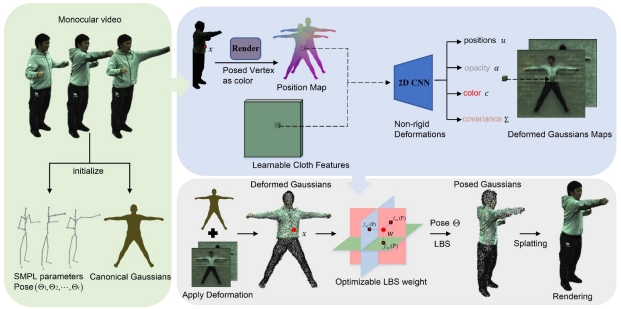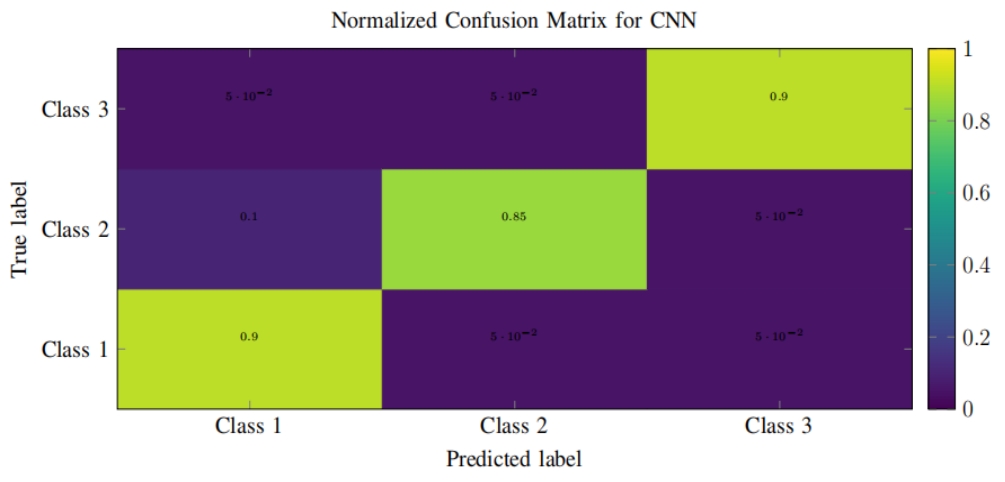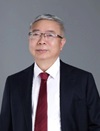
Asia Pacific Academy of Science Pte. Ltd. (APACSCI) specializes in international journal publishing. APACSCI adopts the open access publishing model and provides an important communication bridge for academic groups whose interest fields include engineering, technology, medicine, computer, mathematics, agriculture and forestry, and environment.



Application of Metaverse and virtual reality in education
Vol 3, Issue 2, 2022
Download PDF
Abstract
The objective of this article is to develop a literature review on the use of Metaverse and virtual reality focused on education. Taking into account that education lives a continuous process of change in search of quality, the use of new tools favors this process, therefore, the use of virtual platforms focused on virtual reality and Metaverse are in essence tools that energize the teaching and learning processes, contribute to organize and update the contents, and allow the student and learner to interact within the virtual environment. In this context, the present work was developed based on an exploratory, descriptive methodology; using the categories Metaverse, virtual reality and teaching, a search was carried out in the Science, Scopus and web Science databases, obtaining one hundred reference articles, from which the above categories are analyzed.
Keywords
References
- Lin T, Lan Y. Language learning in virtual reality environments: Past, present, and future. Journal of Educational Technology & Society 2015; 18(4): 486–497.
- Almenara JC, Osuna JB, Obrador M. Augmented reality applied to the teaching of medicine. Educación Médica 2017; 18(3): 203–208.
- Aguilar E, Vivas A, Sabater J. An approach to augmented reality and the surgical applications. Entre Ciencia e Ingeniería 2018; 12(24): 15–24.
- Kanematsu H, Ogawa N, Shimizu A, et al. Skype discussion for PBL between two laboratories and students biological/psychological responses. Procedia Computer Science 2017; 112(1): 1730–1736.
- Martín G, Mora EJ, Añorbe B, et al. Virtual technologies trends in education. EURASIA Journal of Mathematics Science and Technology Education 2017; 13(2): 469–486.
- Zhang B, Robb N, Eyerman J, et al. Virtual worlds and gamification to increase integration of international students in higher education: An inclusive design approach. International Journal of E-Learning & Distance Education 2017; 32(2): 1–21.
- Zhang Y, Chen J, Miao D, et al. Design and analysis of an interactive MOOC Teaching System based on virtual reality. Revista Internacional de Tecnologías Emergentes en el Aprendizaje (iJET) 2018; 13(7): 111–123.
- Mota JM, Ruiz I, Dodero JM, et al. Augmented reality mobile app development for all. Computers & Electrical Engineering 2018; 65(1): 250–260.
- Dios JG, Bandera FH, Continuum ED. Continuum: The power of e-learning and Web 2.0 in medical training in paediatrics. Three years of experience. Educación Médica 2018; 19(4): 241–249.
- Huertas F, Navarro A. SOA support to virtual campus advanced architectures: The VCAA canonical interfaces. Computer Standards & Interfaces 2015; 40(1): 1–14.
- Khlaisang J, Songkram N. Designing a virtual learning environment system for teaching twenty-first century skills to higher education students in ASEAN. Technology, Knowledge and Learning 2017; 24(1): 41–63.
- Parra C. Virtual teaching in postgraduate programs: The importance of social collaboration in virtual communities. Rocedia-Social and Behavioral Sciences 2017; 237(21): 1430–1438.
- Davila CE. A research model aimed at the implementation of programs structured in virtual learning environments. Unipluriversidad 2015; 15(2): 61–73.
- Pertuz S, Torres J. Guidelines for the design of Massive Online Open Courses (MOOC) in electronic engineering. Entre Ciencia e Ingeniería 2017; 11(21): 42–49.
- Lv Z, Li X, Li W. Virtual reality geographical interactive scene semantics research for immersive geography learning. Neurocomputing 2017; 254(6): 71–78.
- Urra E, Sandoval S, Irribarren F. The challenge and future of simulation as a teaching strategy in nursing. Investigación en Educación Médica 2017; 6(22): 119–125.
- Mustafa A. The personalization of e-learning systems with the contrast of strategic knowledge and learner’s learning preferences: An investigatory analysis. Applied Computing and Informatics 2018. In Press.
- Papi C. Digital spaces: Between educational tools and student uses. Procedia-Social and Behavioral Sciences 2015; 174(12): 3757–3764.
- Gallego M, Bueno S, Noyes J. Second Life adoption in education: A motivational model based on uses and gratifications theory. Computers & Education 2016; 100(1): 81–93.
- Hubalovsky S, Hubalovska M, Musilek M. Assessment of the influence of adaptive E-learning on learning effectiveness of primary school pupils. Computers in Human Behavior 2018; 92(1): 691–705.
- Godwin R. Games of emerging technologies in language learning: Opportunities and challenges. Language Learning & Technology 2014; 18(2): 9–19.
- Ruiz CR, Castiblanco IA, Cruz JP, et al. Simulation games in industrial engineering education: Case study at the Colombian School of Engineering Julio Garavito. Entre Ciencia e Ingeniería 2018; 12(23): 48–57.
- Liu D, Barba L, Valdiviezo P, et al. Intelligent tutoring module for a 3Dgame-based science e-learning platform. Revista iberoamericana de Inteligencia Artificial2017; 20(60): 1–19.
- Beach J, Wendt J. Using virtual reality to help students with social interaction skills. The Journal of the International Association of Special Education 2016; 16(1): 26–33.
- Mufadhal ME, Sahabudin NA, Al-Sharafi M. Conceptualizing a model for adoption of online social networks as a learning tool. Advanced Science Letters 2018; 24(10): 7747–7750.
- Pertuz S, Torres J. Guidelines for the design of Massive Open Online Courses (MOOC) in electronic engineering. Entre Ciencia e Ingeniería 2017; 11(1): 42–49.
- Guayara C, Millan EE, Gómez C. Design of a virtual digital literacy course for teachers at the University of the Amazonia. Revista Cientifica 2019; 1(34): 34–48.
- Manning P. Free the code, free the world: The chronotopic “worldness” of the virtual world of Ryzom. Language & Communication 2019; 20(1): 1–10.
- Zhou M, Leenders MA, Cong LM. Ownership in the virtual world and the implications for long-term user innovation success. Technovation 2018; 78(1): 56–65.
- Fernández SM. Virtual worlds. Meta-analysis of educational experiences from its beginnings. Enseñanza & Teaching: Revista Interuniversitaria de Didáctica 2016; 34(2): 43–63.
- Chen JC. The crossroads of English language learners, task-based instruction, and 3D multi-user virtual learning in Second Life. Computers & Education 2016; 102(1): 152–171.
- Ata R. An exploration of higher education teaching in Second Life in the context of blended learning. Turkish Online Journal of Educational Technology-TOJET 2016; 15(3): 1–9.
- Irwin P, Coutts R. A systematic review of the experience of using Second Life in the education of undergraduate nurses. Journal of Nursing Education 2015; 54(10): 572–577.
- Barry DM, Kanematsu H, Nakahira K, et al. Virtual workshop for creative teaching of STEM courses. Procedia Computer Science 2018; 126(1): 927–936.
- Choi HS, Kim SH. A content service deployment plan for metaverse museum exhibitions—Centering on the combination of beacons and HMDs. International Journal of Information Management 2017; 37(1): 1519–1527.
- Paine CC, Klar A, Hayslett A. The use of e-learning, narrative, and personal reflection in a medical school ethics and palliative care course (FR482E). Journal of Pain and Symptom Management 2019; 57(2): 439.
- Hubackova S. Blended learning-new stage in the foreign language teaching. Procedia-Social and Behavioral Sciences 2015; 197(25): 1957–1961.
- Bucea-Manea-Ţoniş R, Andronie M, Latagan M. E-Learning in the era of virtual reality. The International Scientific Conference eLearning and Software for Education 2018; 1(1): 363–369.
- Wan S, Niu Z. An e-learning recommendation approach based on the self-organization of the learning resource. Knowledge-Based Systems 2018; 160(15): 71–87.
- Garcia R, Falkner K, Vivian R. Systematic literature review: Self-regulated learning strategies using e-learning tools for computer science. Computers & Education 2018; 123(1): 150–163.
- Lau K, Lam T, Kam BN, et al. The role of textbook learning resources in e-learning: A taxonomic study. Computers & Education 2018; 118(1): 10–24.
- Nikolić V, Kaljevic J, Jović S, et al. Survey of quality models of e-learning systems. Physica A: Statistical Mechanics and its Applications 2018; 511(1): 324–330.
- Nguyen VT, Dang T. Setting up virtual reality and augmented reality learning environment in Unity. In Mixed and Augmented Reality (ISMAR-Adjunct). IEEE International Symposium on Mixed and Augmented Reality 2017; 1(1): 315–320.
- Kanematsu H, Ogawa N, Shirai T, et al. Blinking eyes behaviors and face temperatures of students in YouTube lessons—For the future e-learning class. Procedia Computer Science 2016; 96(1): 1619–1626.
- İnce E, Kırbaşlar FG, Güneş ZÖ, et al. An innovative approach in virtual laboratory education: The case of “IUVIRLAB” and relationships between communication skills with the usage of IUVIRLAB. Procedia-Social and Behavioral Sciences 2015; 195(3): 1768–1777.
- Asteriadis S, Tzouveli P, Karpouzis K, et al. Estimation of behavioral user state based on eye gaze and head pose—Application in an e-learning environment. Multimedia Tools and Applications 2009; 41(3): 469–493.
- Arafat S, Aljohani N, Abbasi R, et al. Connections between E-learning, web science, cognitive computation and social sensing, and their relevance to learning analytics: A preliminary study. Computers in Human Behavior 2018; 92(1): 478–486.
- Yilmaz R. Exploring the role of e-learning readiness on student satisfaction and motivation in flipped classroom. Computers in Human Behavior 2017; 70(1): 251–260.
- Yang X, Cheng P, Yang X. The impact of three types of virtual reality scene on learning. IEEE International Conference of Educational Innovation through Technology 2017; 1(1): 322–324.
- Urh M, Vukovic G, Jereb E. The model for introduction of gamification into e-learning in higher education. Procedia-Social and Behavioral Sciences 2015; 197(25): 388–397.
- Cabada RZ, Estrada ML, Hernández FG, et al. An affective and Web 3.0-based learning environment for a programming language. Telematics and Informatics 2018; 35(3): 611–628.
- Pellas N, Boumpa A. Blending the CoI model with Jigsaw technique for pre-service foreign language teachers’ continuing professional development using Open Sim and Sloodle. Education and Information Technologies 2017; 22(3): 939–964.
- Ueda H, Nakamura M. Data analysis for evaluation on course design and improvement of “Cyberethics” moodle online courses. Procedia Computer Science 2017; 112(1): 2345–2353.
Supporting Agencies
Copyright (c) 2022 Jhonier David Anacona Ortiz, Edwin Eduardo Millán Rojas, Carlos Alberto Gómez Cano

This work is licensed under a Creative Commons Attribution 4.0 International License.

This site is licensed under a Creative Commons Attribution 4.0 International License (CC BY 4.0).

Prof. Zhigeng Pan
Professor, Hangzhou International Innovation Institute (H3I), Beihang University, China

Prof. Jianrong Tan
Academician, Chinese Academy of Engineering, China
Conference Time
December 15-18, 2025
Conference Venue
Hong Kong Convention and Exhibition Center (HKCEC)
...
Metaverse Scientist Forum No.3 was successfully held on April 22, 2025, from 19:00 to 20:30 (Beijing Time)...
We received the Scopus notification on April 19th, confirming that the journal has been successfully indexed by Scopus...
We are pleased to announce that we have updated the requirements for manuscript figures in the submission guidelines. Manuscripts submitted after April 15, 2025 are required to strictly adhere to the change. These updates are aimed at ensuring the highest quality of visual content in our publications and enhancing the overall readability and impact of your research. For more details, please find it in sumissions...






.jpg)
.jpg)

